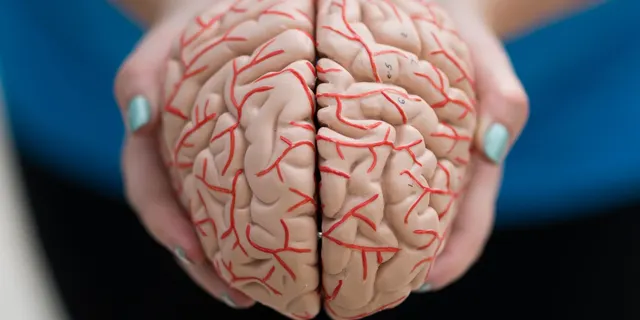Connecticut researchers uncover regulator compound with potential to treat Parkinson's disease: Report
A University of Connecticut scientist has reportedly identified a key mechanism in Parkinson’s disease research.
UConn Health, a branch of the university, said Tuesday that assistant professor of neuroscience Yulan Xiong and her team had discovered a regulator compound which holds the potential to treat the brain disorder.
The work, identifying a regulator of a gene called LRRK2, was published in a recent study in The EMBO Journal. The gene, a section of DNA, is considered the basic unit of inheritance.
The university noted that, in most familial cases, Parkinson's disease is reported to be caused by a genetic mutation in that gene, which has multiple functions in the brain.
FDA DECLINES APPROVAL FOR AMNEAL PHARMACEUTICALS' PARKINSON'S DRUG

Campus in the Towers Residence Halls at the University of Connecticut on Aug. 14, 2020, in Storrs, Connecticut. (Kassi Jackson/Hartford Courant/Tribune News Service via Getty Images)
For people with the disease, the body begins producing too much of the protein daradarin that the gene codes for, and – until now – UConn Health said scientists did not understand the mechanism underlying this protein expression.
Genetic code refers to the instructions contained in a gene that tell a cell how to make a specific protein. Proteins are complex molecules that are important to the structure, function and regulation of the body, making up enzymes that power chemical reactions. An enzyme is a biological catalyst and is almost always a protein.
Xiong and her team identified the regulator for LRRK2 as an enzyme called ATIC, as well as a potential pharmaceutical treatment.
To do so, the lab performed a genome-wide screening to identify candidate genes that could be LRRK2 regulators in yeast cells.
Xiong and PhD student Qinfang Liu found that the enzyme was regulating the gene at the Messenger RNA level – mRNA is genetic material that tells your body how to make proteins – rather than at the protein level.

A woman holds a model of a human brain in her hands on June 1, 2019, in Cardiff, United Kingdom. (Matthew Horwood/Getty Images)
MICHAEL J FOX REBOUNDS AFTER ONSTAGE STUMBLE: 'IT'S NO SECRET THAT PEOPLE WITH PARKINSON'S FALL,’ REP SAYS
When genes need to make a protein, they are copied into mRNA – the instructions to the rest of the cell for how to build the protein, UConn Health added.
The researchers looked at the enzyme in human neural cells – any type of nerve cell – and in fruit fly and mouse models.
"ATIC substrate brings in a binding protein called AUF-1 to specific regions of LRRK2 mRNA. AUF-1 then recruits another DCP1/2 enzyme complex. Together they are able to reduce LRRK2 levels," UConn Health explained. "Xiong and her lab discovered that AICAr, the precursor of ATIC substrate, a drug that mimics ATIC activity, can significantly repress LRRK2 levels."
Substrate is the substance on which an enzyme can act.
"Our study is the first to find out the mechanism," Xiong stated. "It’s also important that we identified the compound, that can directly decrease LRRK2 levels which means that we can use this compound to treat Parkinson’s patients."
CLICK HERE TO GET THE FOX NEWS APP

Michael J. Fox attends the 2021 A Funny Thing Happened On The Way To Cure Parkinson's gala on Oct. 23, 2021, in New York City. (Noam Galai/Getty Images for The Michael J. Fox Foundation)
AICAr was reported to show promise in preclinical trials as a treatment for other conditions, but could not pass through the blood-brain barrier – a challenge Xiong and her team are working to overcome.
UConn’s Technology Commercialization Services has filed a non-provisional patent application for the technology, and said it is facilitating connections between Xiong and prominent companies specializing in Parkinson’s disease treatment.
The Parkinson's Foundation says the number of people living with Parkinson's disease in the U.S. will rise from nearly one million to 1.2 million by 2030. Nearly 90,000 people in the U.S. are diagnosed with Parkinson's disease each year. Men are 1.5 times more likely to have Parkinson's disease than women.
Disclaimer: The copyright of this article belongs to the original author. Reposting this article is solely for the purpose of information dissemination and does not constitute any investment advice. If there is any infringement, please contact us immediately. We will make corrections or deletions as necessary. Thank you.







